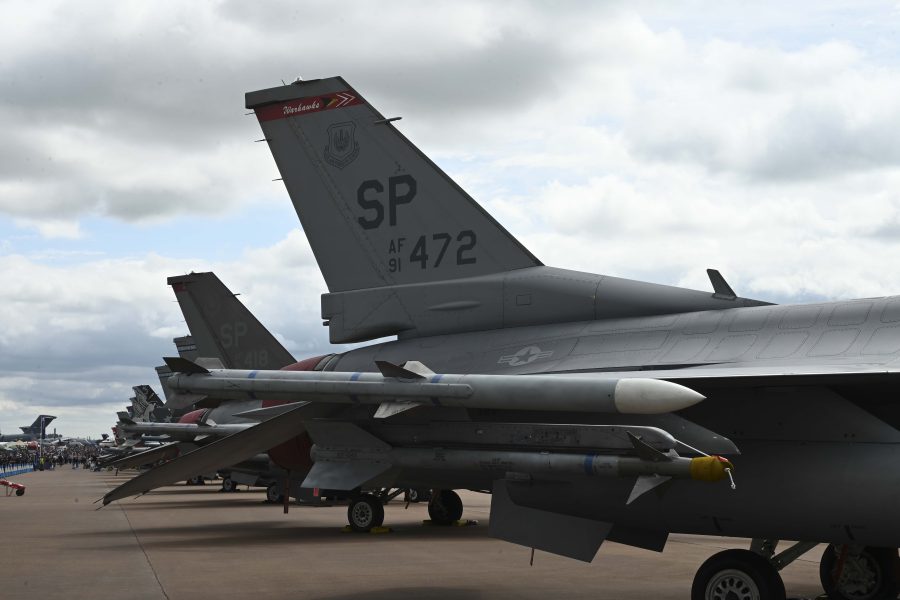A Congressionally mandated commission found serious faults with the Pentagon’s National Defense Strategy, concluding that it fails to fully recognize China’s growing military might, Russia’s persistent threat, risks from Iran and other rogue states—and the increasing convergence of all three.
The Pentagon is under-financed and inadequately structured for the current threat environment, and should be funded and built to fight multiple wars at once, rather than just one. The expert panel called for dramatically strengthening the defense industrial base and for overhauling clunky policies that inhibit technological breakthroughs.
“The threats the United States faces are the most serious and most challenging the nation has encountered since 1945 and include the potential for near-term major war,” the report concluded. “The United States last fought a global conflict during World War II, which ended nearly 80 years ago. The nation was last prepared for such a fight during the Cold War, which ended 35 years ago. It is not prepared today.”
The bipartisan commission was led by former Rep. Jane Harman (D-Calif.) and Eric Edelman, a former undersecretary of defense for policy in the George W. Bush administration. Other members were: Former Army Vice Chief of Staff retired Gen. John M. Keane; Thomas G. Mahnken, president and CEO of the Center for Strategic and Budgetary Assessments; Mara Rudman; Mariah Sixkiller; Alissa Starzak; and Roger Zakheim.
Mahnken said the report, released July 29, was intended as a wake-up call to the American people and its leaders.
“America’s political leaders are not doing as much as they should to prepare the United States for the possibility of a major war,” Mahnken told Air & Space Forces Magazine. “On a bipartisan basis, we were able to reach an agreement that we need to be doing more, and we need to be doing more in terms of resources, but also in terms of planning and many other areas.”
The past two National Defense Strategies stipulated that the U.S. must be prepared to fight one major at a time, while relying on allies and residual U.S. forces to deter and respond to other conflicts. The 2022 National Defense Strategy, released in the wake of Russia’s February 2022 invasion of Ukraine, stated the U.S. must deter “opportunistic aggression” while otherwise “involved in an all-domain conflict.”
But increasing cooperation between China and Russia, along with closer ties between Russia and Iran, and Russia and North Korea, suggest the U.S. may face broader challenges in the future. President Biden’s 2022 National Defense Strategy calls China the “pacing challenge” and Russia an “acute threat.” Russia, however, has proved itself more than just an immediate troublemaker in one part of the world. It remains a disruptive force and has managed to adapt to economic sanctions by leaning on Chinese help to keep its defense factories running and Iranian and North Korean help to generate munitions and drones for its war in Ukraine.
U.S. officials say Moscow’s nuclear and space capabilities remain robust. And its growing military cooperation with China poses new risks. The two launched a joint bomber mission near Alaska last week, their bombers taking off from the same base in Russia for the flight.
New Construct
The commission proposes replacing the one-war strategy in favor of a “Multiple Theater Force Construct.”
The Commission’s report notes the distinction between “the bipolar Cold War construct” in place from the 1950s through the 1980s and “the two-war construct designed afterward for separate wars against less capable rogue states—essentially, one in northeast Asia and one in the Middle East”—that was the basis for the post-Cold War strategies that followed.
“Neither model meets the dimensions of today’s threat or the wide variety of ways in which and places where conflict could erupt, grow, and evolve,” the commissioners write. “It reflects the likelihood of simultaneous conflicts in multiple theaters because of the partnership of U.S. peer or near-peer adversaries and incorporates the U.S. system of alliances and partnerships.”
Today’s $850 billion defense budget is insufficient for those requirements, the report says. Some members of 2018 NDS commission called for annual 3 percent to 5 percent budget growth—over and above inflation. But neither presidential administration since then has sought anything close to that. In fact, the 2023 Fiscal Responsibility Act requires the defense budget to decline in real terms in both fiscal 2025 and 2026.
The commissioners criticized multiple administrations for backing National Defense Strategies based on wishful thinking, as well as budgetary gridlock in Congress, and general indifference from an American public that is largely disengaged on national security issues.
“The lack of preparedness to meet the challenges to U.S. national security is the result of many years of failure to recognize the changing threats and to transform the U.S. national security structure,” the commissioners say. “The 2011 Budget Control Act, repeated continuing resolutions, and inflexible government systems” exacerbate the problem.
“The United States is still failing to act with the urgency required, across administrations and without regard to governing party,” the report says. “Implementing these recommendations to boost all elements of national power will require sustained presidential leadership and a fundamental change in mindset at the Pentagon, at the National Security Council and across executive branch departments and agencies, in Congress, and among the American public writ large.”


